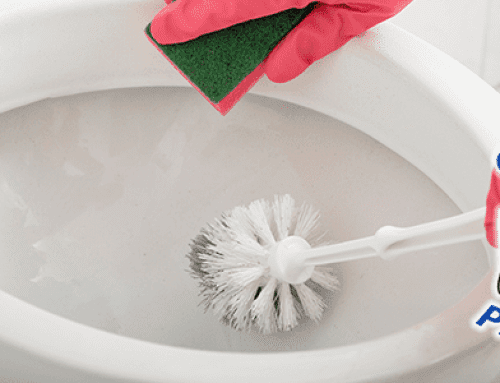Have you found yourself showering in several inches of dirty water because it is draining at a snail’s pace? Or even worse, while cleaning vegetables in the sink, have you noticed the foul odor of whatever is clinging to those pipes begin to lurk up? Clogged drains are one of the most common household plumbing issues. You might be tempted to buy those corrosive, quick fix chemicals at a home improvement store, but over time those will also eat away at your pipes. We do not recommend these products! And though clearing clogged drains are one of our most common services, there are a few DIY methods you can try first to loosen up a minor clog yourself.
Zip-It Tool
Here’s a handy little tool that we do recommend and can be found at most hardware stores. This thin piece of flexible plastic with tiny barbs up and down the sides costs only a few dollars. In your search, you might see other similar products called a hair snare, a drain cleaning tool, a stick drain cleaner and a drain opener. Whatever you call it, everyone needs this in their arsenal of DIY tools. It couldn’t be simpler to use. All you do is push it down your clogged drain and slide it up and down to dislodge whatever is blocking your drain. Once you’ve cleared the drain, clean off the gunk (try not to get grossed out at what you see), and save the zip-it for future clogged jobs.
Vinegar and baking soda solution
This method is best used when you first notice a clog. It’s also a great option if you find yourself tempted to buy the harsh chemicals. Vinegar is made from acetic acid and when mixed with baking soda, the reaction can often push out the clog.
Boil a pot of water and pour all but one cup down the clogged drain. Once the water clears, pour one cup of baking soda directly into the drain and then follow with an equal amount of white vinegar. Once the fizzing subsides (or about 15-20 minutes), pour the reserved hot water down the drain. Repeat as needed.
Wet/dry vac
If you have a particularly stubborn clog or just don’t have the time and patience to wait for chemicals to work their magic, then head to your garage and pull out the wet vac. Most even come with clog cleaning attachments.
Since there are many variations of these vacuums, we recommend following the specific instructions of your particular model for this job. But suffice it to say, these vacuums have a good deal of power and even with your most stubborn clog, you’ll have full drain clearance in no time.
Preventing a clogged drain
With all of that said, the best way to clear a clog, is to avoid one in the first place.
- In the kitchen, avoid disposing grease and oil down the sink. When it is absolutely necessary to dump a small amount, follow it with hot water. Also avoid disposing coffee grinds and fibrous foods like celery and corn husks
- Keep your garbage disposal clean, and always run water when using it. In a sink without a disposal, use a strainer to catch pieces of food and debris to regularly toss in the garbage or compost.
- In the bathroom, use a drain cover or strainer to catch as much hair as is possible. After every shower, get into the habit of clearing the drain of hair.
If you’ve attempted all three of these methods with little success, it might be time to call the professionals. We are eager to clear your most stubborn clogs.




